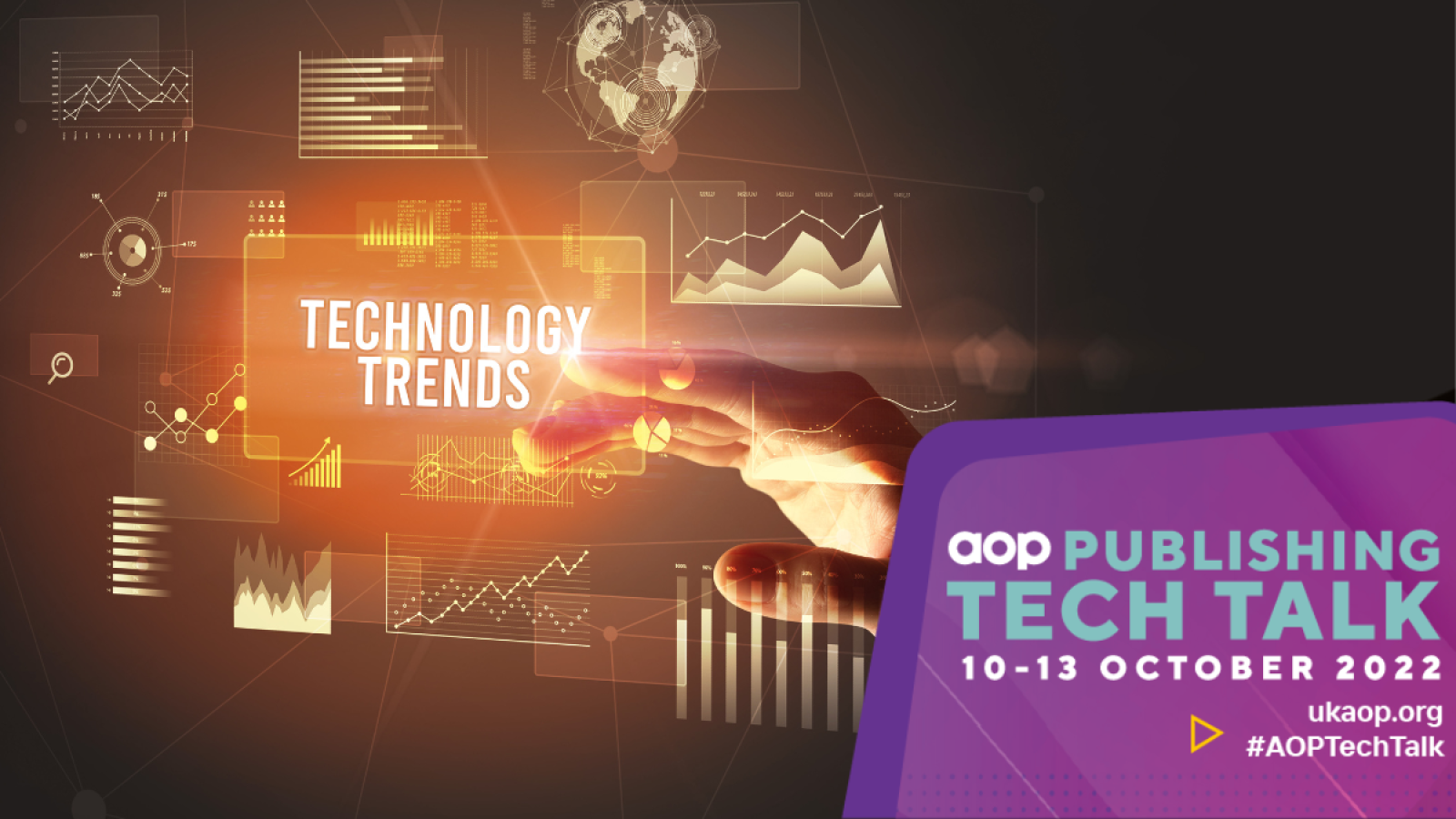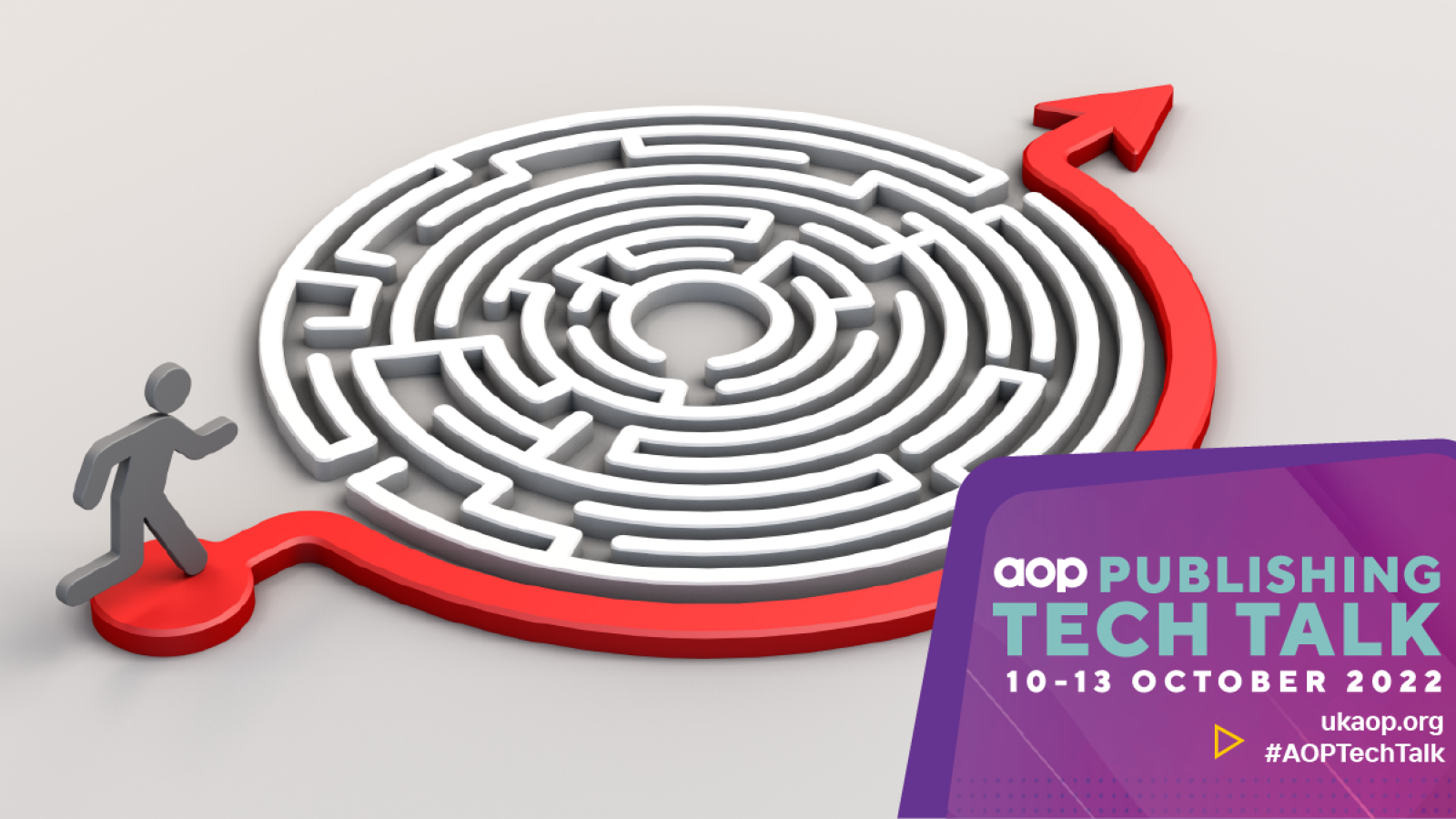
Three technological trends re-shaping digital publishing
Published: 04 Oct 2022
As of July 2022, there are 5.03 billion internet users – more than double the number of users online just a decade ago. The scale of growth in the digital world is almost beyond comprehension, and there is a constant steam of new technologies launched to market, each promising to be the holy grail you need to solve your challenges.
“It's not about more technology anymore, it is about the right technology for the job,” explains Mads Holmen, VP, Product Marketing at EX.CO. “What to build, what to buy... and how to put it together efficiently.”
So what has the stickiness to actually make a real impact in our industry? Before they share their insight at the Publishing Tech Talk next week, we asked industry experts how new technology will reshape digital publishing over the next three years and what 2025 could hold for us.
Creating the next generation of content
You can’t talk about the technology of the future without talking about Artificial Intelligence. As with all potentially revolutionary technology, it’s hard to discern truth from sensationalism and fearmongering and AI is no different. However, over recent years, the usage of AI has become more – well, intelligent – and in the next three years, adoption and integration of AI technologies into digital publishing will likely become far more prevalent.
“Recent leaps forward in AI generation of text and images will probably make some people worried about the rise of automated low-quality content farms,” suggested James Aylett, Chief Data Officer at Annalect. “However, there’s a more positive spin where these tools are used by creative humans to create high-quality content that reaches further than today – the mark of any truly great tool.”
Increasingly, we’ve seen more being created at the crux of human and artificial intelligence. Musicians are using AI to push the boundaries of their lyrics and melodies. The Melbourne Writers Festival developed a series of AI-generated artwork based on famous literary works. The possibilities are endless, and AI could open the door to more scalable, resource-efficient content.
Managing data more effectively to personalise the experience
“As we enter a cookieless world, we are exploring new solutions using first party data and we have control over the mechanics we use to monetise that,” explained Katherine Le Ruez, Director of Commercial Strategies and Operations at The Guardian. “Technology, whether consent mechanisms, targeting capabilities or privacy initiatives within advertising, will play a key role.”
Third-party cookies are being phased out, and with it comes a more pressing need for technologies to provide insights into audience behaviour. For example, Erfan Djazmi, SVP, Platforms and Technology at Mediahub, suggested that within three years, “brands will create their own identity graphs and forms of clean room technology that stitches together user identity across media exposures, their owned site behaviour, and CRM.”
In response, publishers will need to lean into solutions that integrate with these brand-built technologies to share consented audience data between parties and create more personalised browsing experiences for their audiences.
“The job of technology in digital publishing is to help us optimize each page and visit to achieve the right blend of loyalty and revenue,” explained EX.CO’s Mads Holmen. “The 80/20 rule is key. It is always 20% of your users that will drive 80% of your revenue, but technology is making it easier to provide each segment with an optimized experience.”
Delivering against ESG strategies
Of course, the more we use technology to streamline our business, the more we increase the carbon output as well. “Given the continued investment into automation using programmatic efficiencies, the industry must adopt seamless strategies to decarbonise the digital media supply chain to permanently reduce carbon emissions,” outlined Gerson Barnett, Founder & Executive Director at Right Thing Media.
In the short term, however, we need to take action as an industry now and implement reduction initiatives. By reviewing or amending the formats that you use you can make ‘deep cuts’ in your supply chain, but there are also a number of low-impact technologies that are decreasing carbon output for digital publishers. One of Gerson’s recommendations is “implementing ‘environmentally light’ solutions like adaptive streaming,” a technology that only streams the data the user actually consumes, pausing the video when the ad unit goes out of screen.
For example, at the AOP we have partnered with adaptive streaming technology company, SeenThis, reducing our data usage by 65% and improving the website image load time by 65-85%. All of this creates a better experience and helps to minimise the environmental impact of digital publishing – something that will become increasingly important with sustainability becoming a priority for consumers.
What does this mean for publishers?
Technological change is coming at the rate of knots and the consequences will be felt across all areas of the business. “We may see investments being reduced in other areas to compensate,” suggested Katrina Broster, Marketing Performance & Technology Director at Financial Times. “There is a suggestion that marketing investment in TV, Radio, and other linear formats are reducing to make way for these evolving / emerging technologies for example.”
Similarly, internal resource allocation will shift – and the skills needed on your team are changing. As new technology enters the industry, job roles are evolving in response; as labour-intensive jobs become automated, people are able to focus on more complex tasks and developing the business in new areas. And of course, individuals will need more digital skills at their fingertips to be able to work symbiotically with technology. Flexibility, agility, and the willingness to try their hand at new technologies will become increasingly important skill sets.
Collaboration between teams will likely solidify as well. “As digital publishing continues to centre on revenue diversification as a means of growth, appointing technologies that can service multiple revenue streams (advertising, subscriptions, syndication, etc.) will become standard practice,” Katrina continued. The reliance on a common technology will encourage greater communication between cross-functional teams in order to be successful, and will also open new possibilities for future growth as skill sets and knowledge from different areas are pooled.
Whatever the future might hold, technology will continue to be a core driver for innovation and re-invention within digital publishing. At AOP Publishing Tech Talk next week, we’re bringing together experts from across the industry to explore how publishers are leveraging new technologies to streamline their businesses and open the door for new possibilities. Join us in London to discover how you can take your strategies to the next level across metrics, experience, revenues, and privacy & identity. Find out more here.
Categories: AOP News
